Author: Will Lovell
There are a number of things that can go wrong when making a batch of beer, leading to a finished product that can range from less-than-desirable to downright undrinkable. One of the more prominent issues brewers of quality beer work to avoid is oxidation, as it can lead to rapid staling and the development of unpleasant flavors including wet cardboard, mustiness, and a sickly sweet character.
While most of the attention when it comes to avoiding cold-side oxidation is focused on post-fermentation factors, it’s been proposed that adding ascorbic acid to the mash serves as a sort of prophylactic by preventing the formation of oxidative compounds later on in the process. Indeed, ascorbic acid, also known as vitamin C, is a widely used chemical anti-oxidant in the food industry that has gained the favor of some brewers who are concerned about adding sulfites to their product, as it can lead to health issues for some consumers.
Following publication of a prior xBmt where tasters could not distinguish a West Coast Pilsner treated with ascorbic acid at packaging from one that was not dosed with ascorbic acid, we received many requests to repeat the xBmt but add the ascorbic acid at the mash step, with claims that “oxidation starts way earlier than packaging” and that employing this method has led to noticeable improvements. Considering the amount of ascorbic acid I still had on-hand, I designed an xBmt to test it out for myself.
| PURPOSE |
To evaluate the differences between a Hazy IPA where ascorbic acid was to the mash and one that was not dosed with ascorbic acid.
| METHODS |
For this xBmt, I went with a Hazy IPA recipe primarily due to the style being known for its sensitivity to oxygen.
Too Hazy For A Name
Recipe Details
| Batch Size | Boil Time | IBU | SRM | Est. OG | Est. FG | ABV |
|---|---|---|---|---|---|---|
| 5.5 gal | 60 min | 47.1 | 7.9 SRM | 1.063 | 1.011 | 6.83 % |
| Actuals | 1.063 | 1.011 | 6.83 % | |||
Fermentables
| Name | Amount | % |
|---|---|---|
| Wildfire Pale Malt | 13.375 lbs | 74.31 |
| Denton County Wheat Malt | 2 lbs | 11.11 |
| Flaked Oats | 1.25 lbs | 6.94 |
| Flaked Barley | 1 lbs | 5.56 |
| Honey Malt | 6 oz | 2.08 |
Hops
| Name | Amount | Time | Use | Form | Alpha % |
|---|---|---|---|---|---|
| Magnum | 10 g | 60 min | Boil | Pellet | 12 |
| Centennial | 30 g | 15 min | Boil | Pellet | 9.2 |
| BRU-1 LUPOMAX | 30 g | 5 min | Boil | Pellet | 20 |
| Citra | 30 g | 5 min | Boil | Pellet | 12 |
| BRU-1 LUPOMAX | 30 g | 0 min | Boil | Pellet | 20 |
| Citra LUPOMAX | 30 g | 0 min | Boil | Pellet | 18.5 |
| Eukanot LUPOMAX | 30 g | 0 min | Boil | Pellet | 19 |
| BRU-1 LUPOMAX | 60 g | 3 days | Dry Hop | Pellet | 20 |
| Ekuanot LUPOMAX | 60 g | 3 days | Dry Hop | Pellet | 19 |
| Citra LUPOMAX | 30 g | 3 days | Dry Hop | Pellet | 18.5 |
Miscs
| Name | Amount | Time | Use | Type |
|---|---|---|---|---|
| Ascorbic Acid | 5 g | 0 min | Mash | Other |
Yeast
| Name | Lab | Attenuation | Temperature |
|---|---|---|---|
| Capri Ale (I22) | Imperial Yeast | 72% | 71.6°F - 75.2°F |
Notes
| Water Profile: Ca 114 | Mg 6 | Na 0 | SO4 131 | Cl 122 |
Download
| Download this recipe's BeerXML file |
After adding identical volumes of RO water to separate Delta Brewing Systems AIO units and then setting the controllers to heat them up, I weighed out and milled the grains.
Once the water for each batch was adequately heated, I incorporated the grains then immediately added ascorbic acid to one mash.
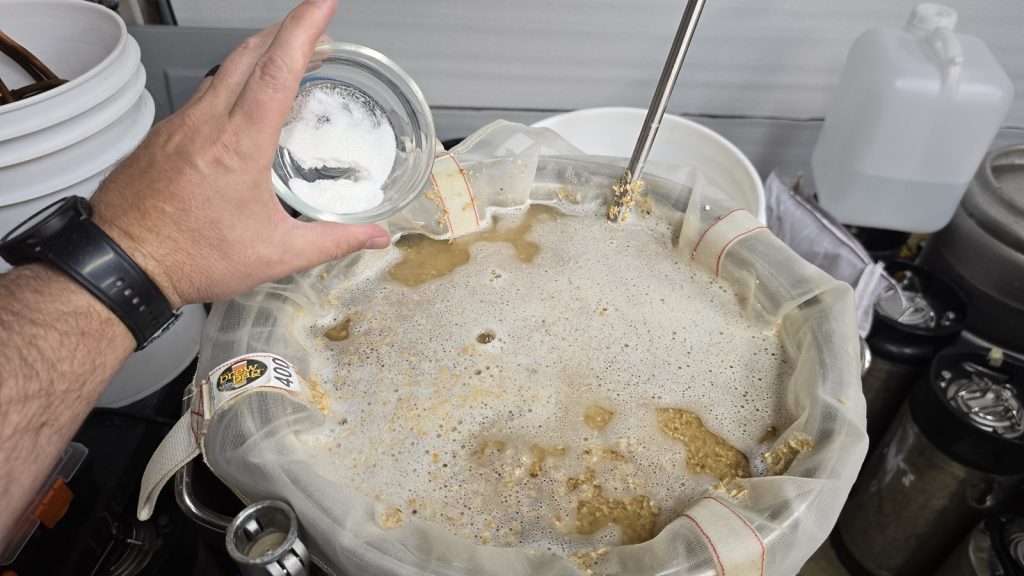
Both controllers were set to maintain my desired mash temperature of 152°F/67°C.
While the mashes were resting, I prepared the kettle hop additions.
Once each 60 minute mash was complete, I removed the grains then boiled the worts for 60 minutes, adding hops at the times listed in the recipe.
When the boils were complete, the worts were quickly chilled before I took refractometer readings showing they were at the same target OG.
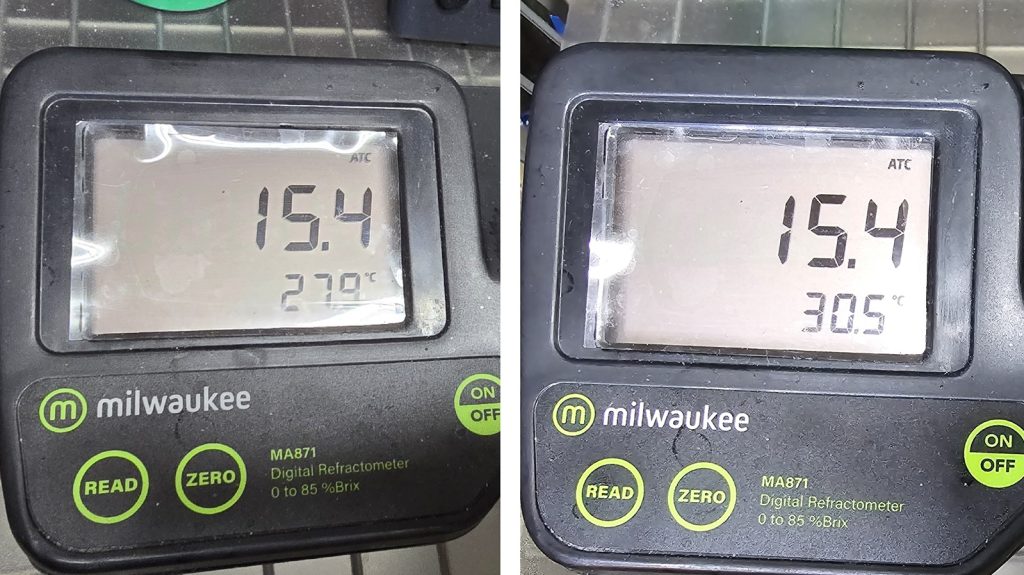
Identical volumes of wort from either batch were transferred to separate FermTanks that were placed in my chamber and left to finish chilling to my desired fermentation temperature of 77°F/25°C. This took a few hours, at which point I pitched a pouch of Imperial Yeast I22 Capri into each.
With signs of activity absent after a week of fermentation, I took hydrometer measurements indicating both beers were at the same target FG.
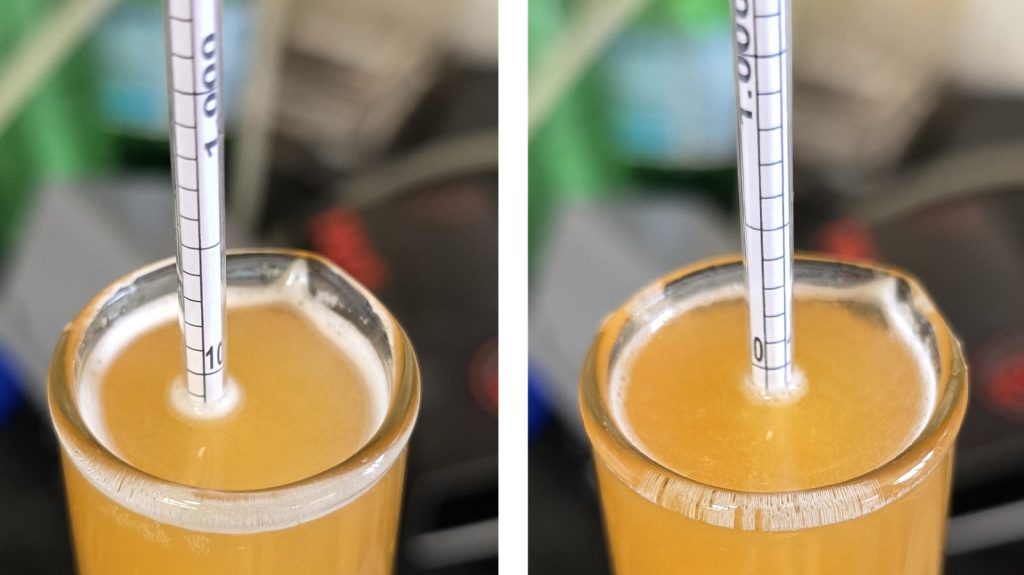
At this point, I pressure-transferred the beers to CO2 purged kegs that were placed in my keezer and left on gas for 3 weeks before they were ready for evaluation.
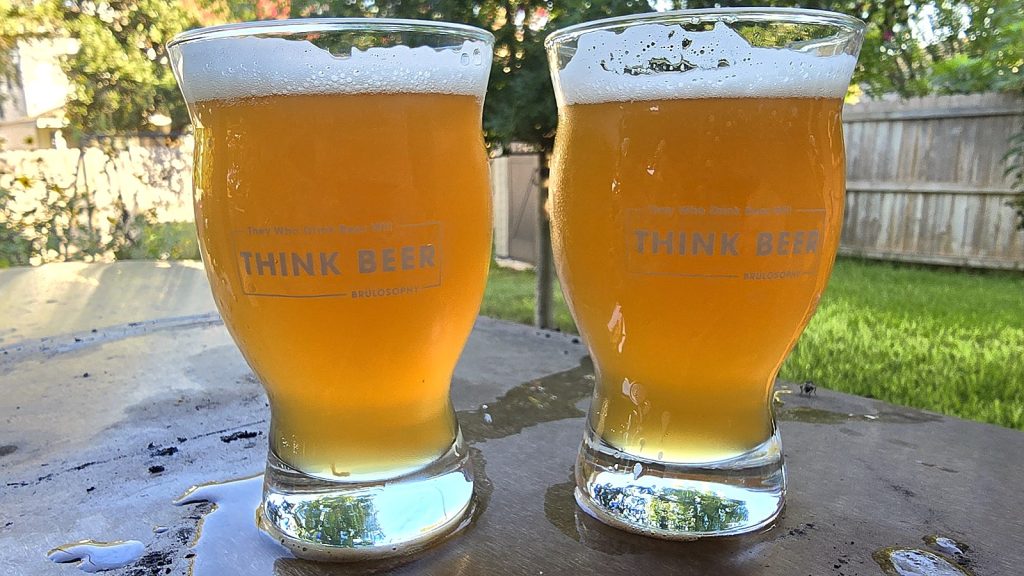
| RESULTS |
A total of 20 people of varying levels of experience participated in this xBmt. Each participant was served 2 samples of the beer that was not treated with ascorbic acid and 1 sample of the beer where ascorbic acid was added to the mash in different colored opaque cups then asked to identify the unique sample. While 11 tasters (p<0.05) would have had to accurately identify the unique sample in order to reach statistical significance, that’s exactly the amount that did (p=0.038), indicating participants in this xBmt were able to reliably distinguish a Hazy IPA that was not treated with ascorbic acid from what where ascorbic acid was added to the mash.
The 11 participants who made the accurate selection on the triangle test were instructed to complete a brief preference survey comparing only the beers that were different. A total of 3 tasters reported preferring the beer made without ascorbic acid, 7 said they liked the beer made with ascorbic acid more, and 1 had no preference despite noticing a difference.
My Impressions: Out of the 5 semi-blind triangle tests I attempted, I correctly identified the unique sample just twice, indicating my inability to consistently distinguish these beers. To my senses, these beers were identical in every way, possessing pungent tropical notes that overshadowed the malt character, and even the appearance was the same.
| DISCUSSION |
From the general brewer’s perspective, oxidation is the enemy of beer freshness, and hence it’s no surprise so many engage in practices to keep oxygen exposure to an absolute minimum. Of the various methods for doing this, the use of chemical antioxidants appears to have become more common in the industry, with some brewers preferring to add ascorbic acid to the mash, which is said to prevent the formation of oxidative compounds that could negatively impact beer later in the process. In support of this claim, tasters in this xBmt were able to reliably distinguish a Hazy IPA that was not treated with ascorbic acid from one that had ascorbic acid added to the mash.
Considering these beers were treated exactly the same other than the variable in question, the most plausible explanation for this result is that the ascorbic acid had some impact that led to the beers being perceptibly different. While no tasters noted oxidation in post-survey conversations, it’s possible that’s that culprit and that over time, the differences would become more vast.
To say these findings surprised me would be an understatement, not only because I personally was unable to tell the beers apart, but I also performed the xBmt looking at the impact of adding ascorbic acid at packaging, which came back not significant. If it’s true that adding ascorbic acid to the mash effectively reduces the chances of oxidation later on down the line, then it really does seem to have a prophylactic quality, which is especially beneficial for those who refrain from using sulfites. I’d be very interested to re-test this variable on beers that are packaged via gravity into non-purged kegs. Until then, and given its general safety, I’ll be incorporating ascorbic acid mash additions into my brewing.
If you have any thoughts about this xBmt, please do not hesitate to share in the comments section below!
Support Brülosophy In Style!
All designs are available in various colors and sizes on Amazon!
Follow Brülosophy on:
FACEBOOK | TWITTER | INSTAGRAM
If you enjoy this stuff and feel compelled to support Brulosophy.com, please check out the Support page for details on how you can very easily do so. Thanks!


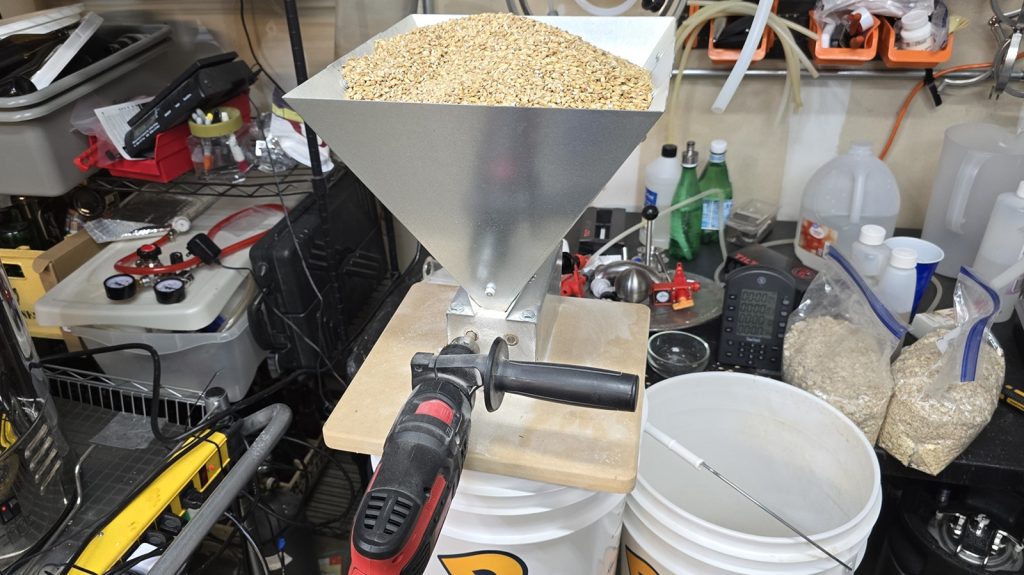
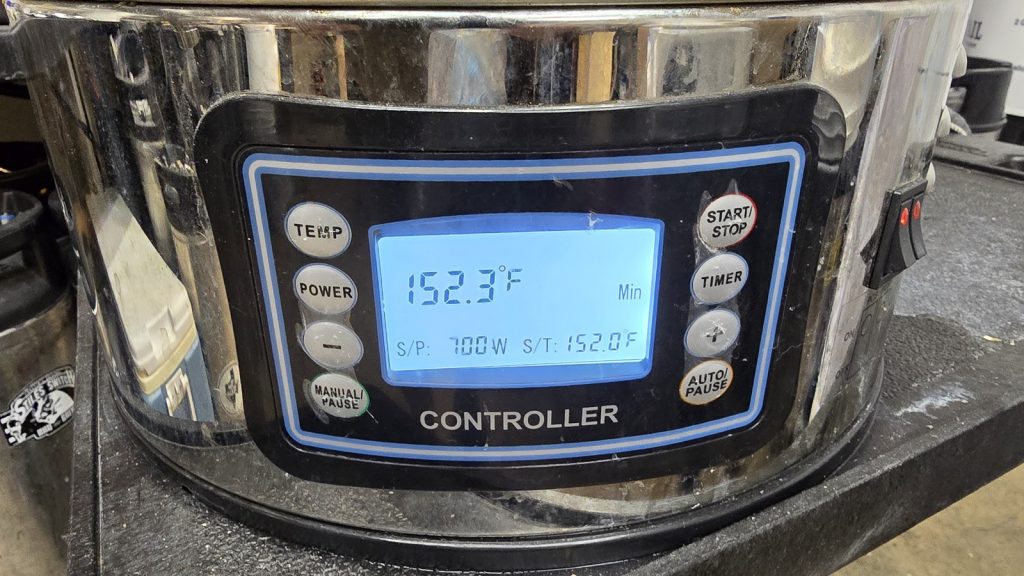
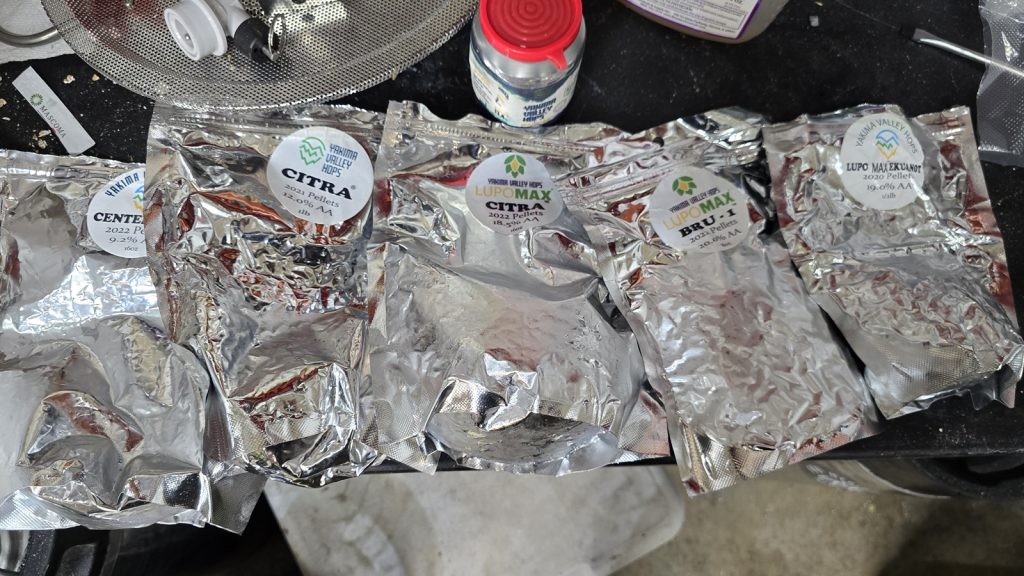
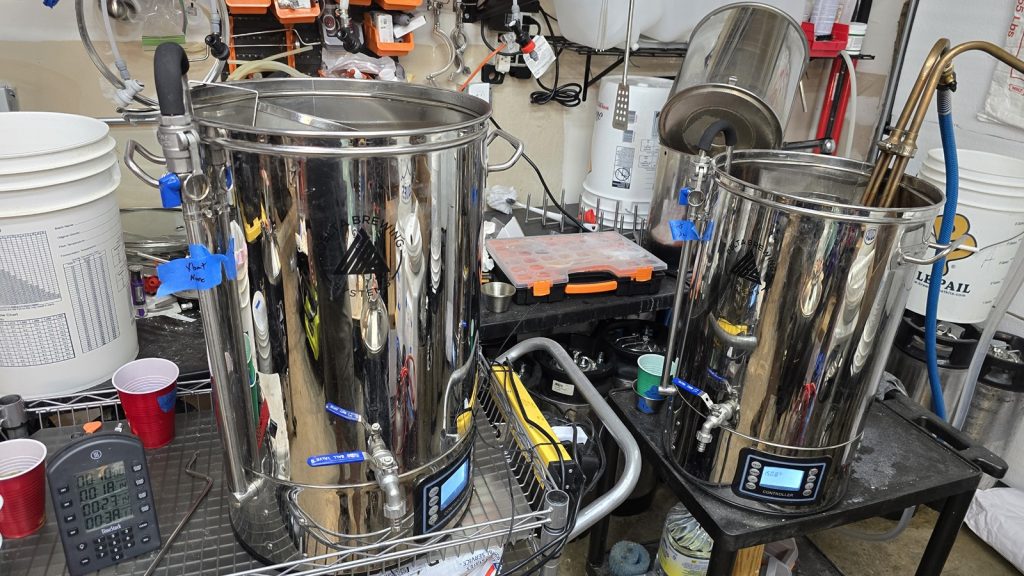
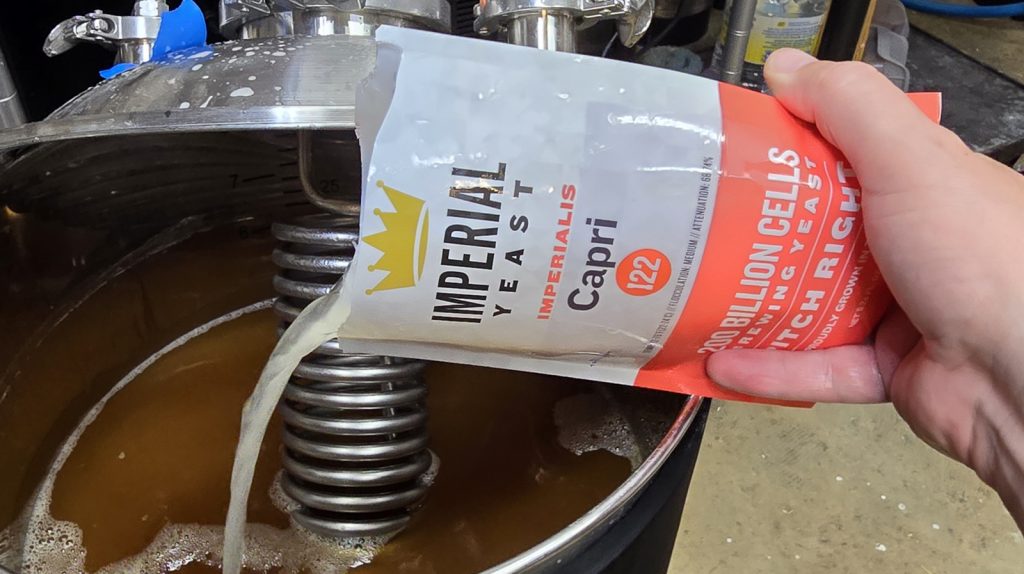











9 thoughts on “exBEERiment | Impact Ascorbic Acid In The Mash Has On A Hazy IPA”
Also, if you’re adding acid to your mash to adjust the mash pH, makes sense to add a type of acid that will reduce oxidation. I’ve tried this but I bottle conditioned, which I’ve concluded is not a packaging method compatible with the hazy IPA style. Way too much opportunity for oxidation, even with the acid.
Perhaps you let it sit for another month and do a test with 20 people. If the goal is to see how the beer oxidates (or not), time would be on your side.
I’m super interested to see if the ascorbic acid has an impact on hop freshness over time. I’ve only just started using it for that reason.
Can you save some of both batches in their kegs for a couple of months? Then go back and do a taste test. See if there is a noticeable difference in the hops between both batches.
How would Ascorbic acid in the mash and oxygenating the wort work? Would it cancel each other out?
Cheers!
It would interesting to see a chemical analysis of AA level post boil.
I wish people would stop quoting Genus brewing. It’s obvious he has no idea what he’s talking about. He can’t pronounce ascorbic acid, then makes a few false statements about it being “one type” of vitamin c and not the type you get in tablets, when on fact it just **is** vitamin c. And 10 seconds on Wikipedia will tell you that.
He’s just read a poorly written paper, not really understood it then regurgitated what he can remember and people take it as fact because he’s the only one who’s created a YouTube video and it.
I wonder if the preservative effect of adding Ascorbic Acid to the mash is that it acts as a mild chelating agent, binding with metals like iron and copper in a more “secure” way than the oxides that commonly form with those metals, while have been known to release oxygen into beer later down the line. Less free metals, less oxygen being held for delayed release, considering the fermentation consumes and blows off much of what is free in the beer.
While yeast does need trace amounts of iron and copper, my impression is that there is more than enough in most grists (in the grain and imparted by milling in metal mills) and in the water. So reducing excessive metals would be a benefit for stability.
I hope you do, – re-test this variable on beers that are packaged via gravity into non-purged kegs. And into non purged bottles, for bottle carbonation.
More exBeeriments, to isolate what effect made the tastes differ, would be good.
Maybe, either neutralising residual AA at end of mash, to find out if effect did come from reduced oxidation later on down the line. Or, in case effect came from AA preventing the loss of grain thiols. Repeat, using a thiol forward recipe.